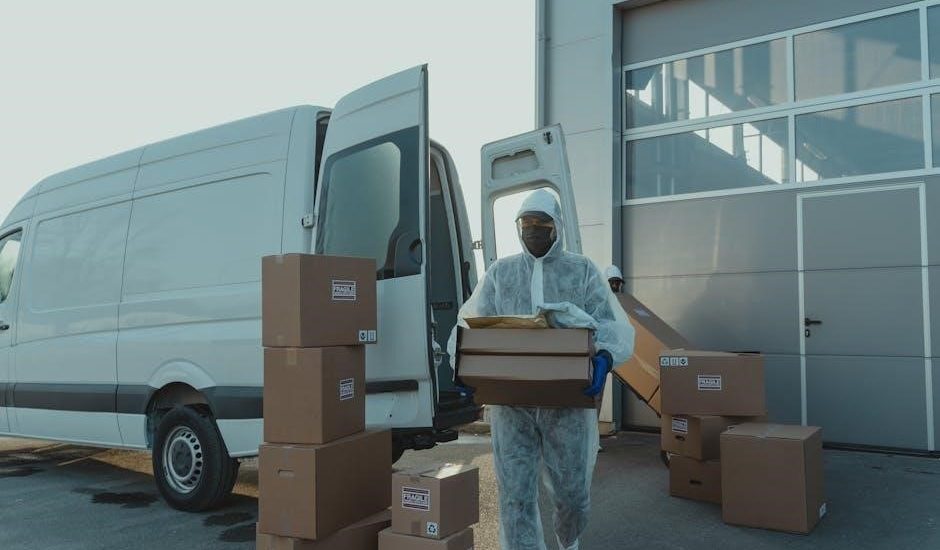This guide provides essential tips for resolving common issues with Genie garage door openers, ensuring smooth operation and addressing problems like door movement and remote functionality.
1.1 Importance of Regular Maintenance
Regular maintenance is crucial for ensuring your Genie garage door opener operates smoothly and reliably. By addressing minor issues early, you can prevent them from escalating into major problems. Proper upkeep extends the lifespan of your opener and ensures safety. Simple tasks like lubricating moving parts and inspecting sensors can significantly enhance functionality. A well-maintained system reduces the risk of unexpected breakdowns, saving time and money. Additionally, regular checks help identify worn or damaged components, allowing for timely replacements. This proactive approach not only ensures optimal performance but also contributes to the overall security and convenience of your garage door system.
1.2 Common Issues and Solutions Overview
Common issues with Genie garage door openers include doors that won’t open or close, non-functioning remotes, and excessive noise. These problems often stem from misaligned sensors, dead remote batteries, or worn-out parts. Simple solutions like resetting the system, reprogramming the remote, or lubricating moving parts can resolve many issues. Advanced troubleshooting may involve inspecting tracks, checking motor functionality, and ensuring proper alignment of components. Addressing these problems promptly ensures reliable operation and prevents further complications. This guide provides a comprehensive overview of these common issues and their solutions, helping you maintain your opener’s efficiency and longevity effectively. Regular checks and timely repairs are key to optimal performance.
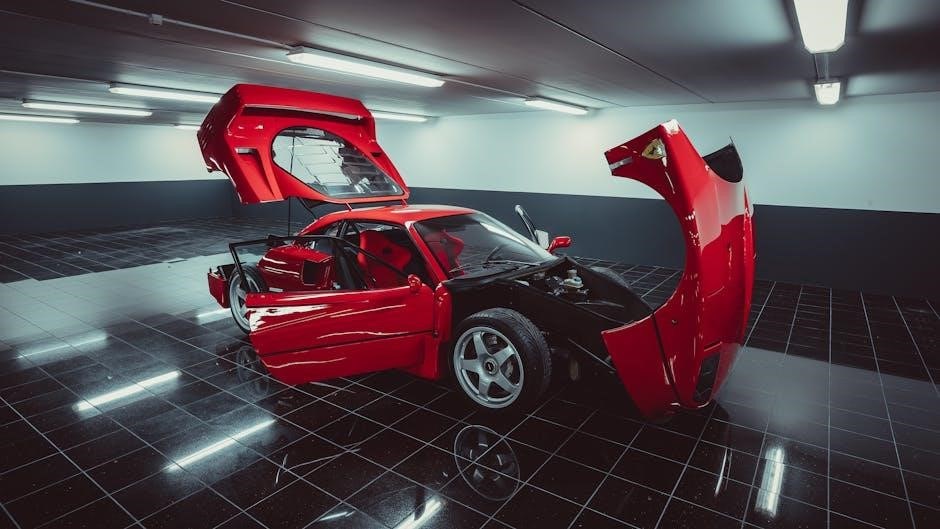
Common Issues with Genie Garage Door Openers
Genie garage door openers may face issues like doors not opening, remote malfunctions, or excessive noise, often due to sensor misalignment, battery problems, or worn components.
2.1 Door Won’t Open or Close
If your Genie garage door won’t open or close, check the power supply first. Ensure the opener is plugged in and the circuit breaker hasn’t tripped. Misaligned sensors are another common cause—clean and adjust them to ensure proper alignment. Inspect the tracks for obstructions or damage, and clear any debris. Worn-out springs or cables can also prevent movement, requiring professional attention. Additionally, check the remote control for functionality and reprogram it if necessary. Regular maintenance, such as lubricating moving parts, can help prevent these issues and ensure smooth operation. Always prioritize safety when troubleshooting.
2.2 Remote Control Not Functioning
If your Genie garage door opener’s remote control isn’t working, start by checking the batteries. Replace them with fresh ones and ensure the compartment is clean. If the issue persists, try reprogramming the remote. Press the Learn button on the motor unit for a few seconds until the light flashes, then hold the remote button until the light stops flashing. Interference from other devices or physical damage to the remote could also be the cause. Move closer to the opener or inspect the remote for cracks or water damage. These steps often resolve the issue without needing professional help.
2.3 Excessive Noise During Operation
Excessive noise from your Genie garage door opener can be both annoying and indicative of underlying issues. Start by lubricating the rollers, hinges, and springs with a silicone-based lubricant to reduce friction and quiet the system. Inspect the tracks for dirt or debris, which can cause the door to grind. Clean them thoroughly and ensure they are properly aligned. Worn-out rollers or damaged springs may also contribute to the noise. Replacing these components can restore smooth operation. Regular maintenance, such as lubricating moving parts and cleaning tracks, helps prevent excessive noise and extends the lifespan of your garage door opener.
Safety Tips Before Troubleshooting
Always disconnect power before starting repairs. Ensure the garage door is secure to prevent accidents. Clear the area of obstructions and consult the manual or a professional if unsure.
3.1 Disconnecting Power Sources
To ensure safety, always disconnect the power supply before troubleshooting your Genie garage door opener. Locate the power cord and unplug it from the electrical outlet. This prevents any accidental start-ups or electrical shocks. Additionally, if your opener is hardwired, switch off the circuit breaker or remove the appropriate fuse. Verify that the opener is completely powered down before proceeding with any repairs. This step is crucial to protect yourself and others from potential hazards. Never attempt to work on the opener while it is still connected to a power source. Safety should always come first.
3.2 Ensuring a Safe Working Environment
Creating a safe environment is crucial when troubleshooting your Genie garage door opener. Clear the area around the door to prevent tripping hazards. Ensure the door is securely held in place to avoid accidental movement. Use a ladder or step stool safely, always maintaining three points of contact. Wear protective eyewear and gloves to shield yourself from potential debris. Never allow children or pets to be near the work area. If the door is heavy or unstable, consider enlisting assistance. Always follow manufacturer guidelines and take necessary precautions to avoid injuries or damage. A safe workspace ensures effective and stress-free troubleshooting. Proper preparation is key to a successful repair.

Resetting the Genie Garage Door Opener System
Resetting your Genie garage door opener can resolve minor issues, restoring functionality. This process often involves the “Learn” button, helping to reboot the system effectively.
4.1 Locating the Learn Button
The Learn button is crucial for resetting and reprogramming your Genie garage door opener. Typically found on the back or side of the motor unit, it may be green, red, or another color. Some models hide it under a light cover for protection. To access it, you might need to remove a faceplate or open a small compartment. Once located, pressing and holding this button for a few seconds initiates the reset process. Ensure you follow the correct sequence to avoid further issues. Always refer to your specific model’s manual for precise instructions, as button placement can vary.
4.2 Step-by-Step Reset Process
Resetting your Genie garage door opener is a straightforward process that can resolve many issues. Start by locating the Learn button, typically on the motor unit; Press and hold it for 10 seconds until the indicator light turns off. This action clears all programmed settings. Next, test the door by pressing the wall control to ensure it operates correctly. If the remote doesn’t work, press the Learn button again briefly until the light flashes, then press the desired remote button to reprogram it. This process restores functionality without needing advanced tools, ensuring your garage door operates smoothly once again.
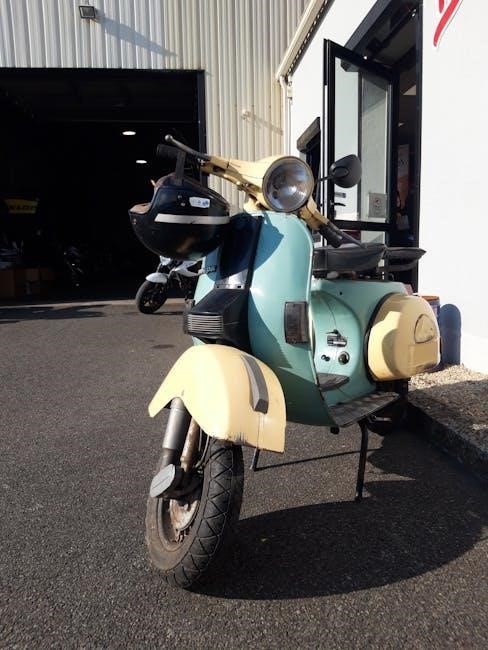
Reprogramming the Remote Control
Reprogramming your Genie remote involves replacing batteries, pressing the Learn button, and testing functionality. Ensure proximity to the motor for successful synchronization and reliable operation.
5.1 Checking Remote Battery Life
Weak or dead batteries are a common cause of remote control issues. To check, remove the batteries and inspect for corrosion or wear. Replace them with fresh, high-quality batteries, ensuring correct polarity. Test the remote afterward to verify functionality. If issues persist, consider reprogramming the remote. Always use the recommended battery type for optimal performance and to avoid damaging the remote. Regular battery checks can prevent unexpected malfunctions, ensuring consistent and reliable operation of your Genie garage door opener.
5.2 Reprogramming Steps for Optimal Functionality
To reprogram your Genie garage door opener remote, start by locating the Learn button on the motor unit. Press and hold it until the LED light flashes. Immediately press and hold the remote button you wish to program. Release when the light stops flashing. Test the remote to ensure proper function. If issues persist, repeat the process or consult your owner’s manual. Reprogramming ensures optimal performance and compatibility, resolving connectivity problems without the need for replacement. This step is essential after a system reset or battery replacement, ensuring seamless communication between the remote and the opener.
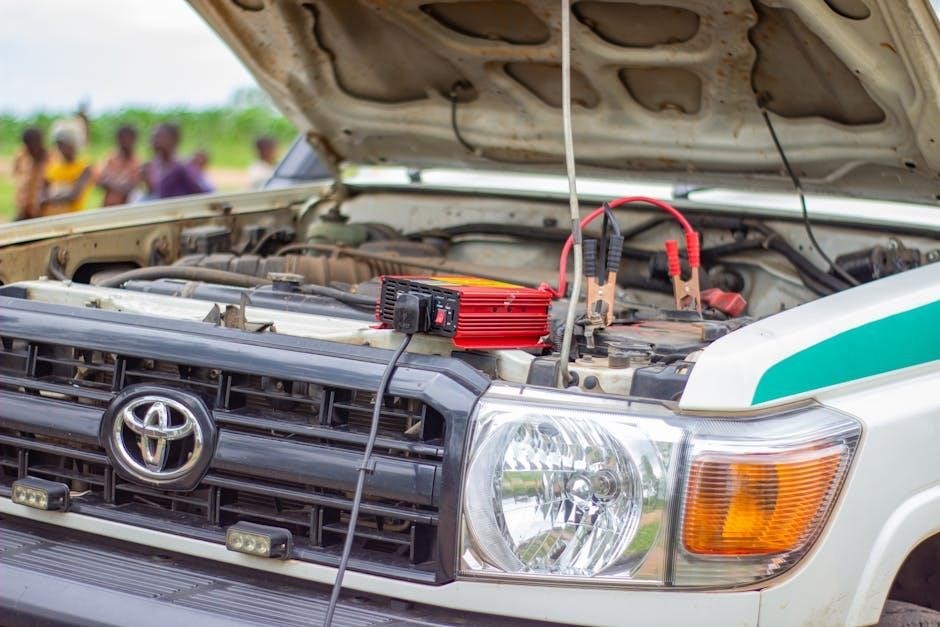
Advanced Troubleshooting Techniques
Diagnose motor issues, inspect sensor alignment, and check tracks for damage. Lubricate moving parts and ensure springs are properly tensioned for optimal performance and reduced noise.
6.1 Diagnosing Motor Issues
Diagnosing motor issues in your Genie garage door opener involves checking for unusual noises, vibrations, or failure to operate. Listen for grinding or humming sounds, which may indicate worn gears or overheating. For models with a Powerhead LED, refer to the error codes to identify specific problems. Ensure the opener is properly powered and check for obstructions in the door’s path. Inspect the motor’s wiring for damage or loose connections. If the motor hums but doesn’t run, it could signal a faulty capacitor or motor bearings. Testing the door manually can help determine if the issue lies with the motor or other components. Always consult your owner’s manual or contact a professional for complex repairs.
6.2 Checking Sensor Alignment and Functionality
Sensors play a crucial role in your Genie garage door opener’s safety and functionality. Misaligned or dirty sensors can cause the door to malfunction. To check alignment, ensure the sensors are securely attached and facing each other directly. Clean the lenses with a soft cloth to remove dirt or debris. If misaligned, adjust them slightly until the indicator lights confirm proper alignment; Test the door’s operation after adjustments. Persistent issues may require reprogramming or professional assistance. Always refer to your owner’s manual for specific guidance on sensor maintenance and troubleshooting for your model. Proper sensor function ensures both safety and smooth operation.
6.3 Inspecting Tracks and Rollers for Damage
Inspecting the tracks and rollers is essential for maintaining your Genie garage door opener’s performance. Over time, these components may accumulate dirt or sustain damage. Check the tracks for any signs of bending or obstruction. Clean them regularly with a soft brush or cloth to ensure smooth movement. Examine the rollers for wear or cracks. Lubricate them with a silicone-based spray to reduce friction and noise. If damaged, replace the rollers promptly to prevent further issues. Ensure all bolts and screws are tightened securely. Properly maintained tracks and rollers ensure the door opens and closes smoothly, reducing the risk of mechanical failure and extending the system’s lifespan. Regular inspections help identify potential problems early, saving time and money.
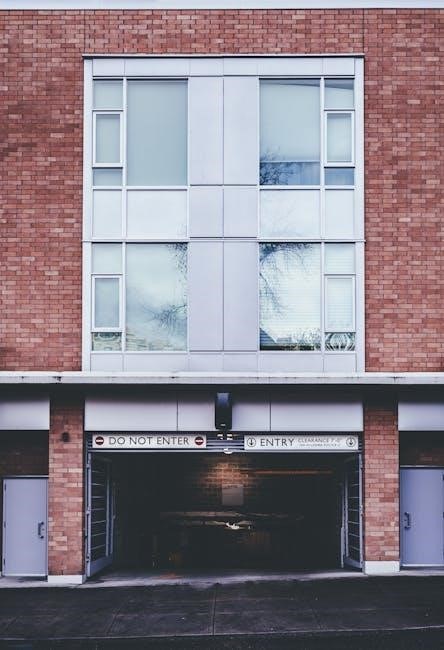
Model-Specific Troubleshooting Guide
This section offers tailored troubleshooting solutions for various Genie models, including ChainLift and BeltLift series, addressing unique features and common issues specific to each model.
7.1 ChainLift 600 (1022) and ReliaG600 (1024)
The ChainLift 600 (1022) and ReliaG600 (1024) models often experience issues like misaligned sensors or faulty chain drive systems. For the 1022, check the chain tension and sensor alignment. For the 1024, inspect the belt for wear and ensure proper sensor positioning. Both models may require resetting the system by pressing the Learn button. Regular lubrication of moving parts and checking for loose connections can prevent common problems. Refer to the specific troubleshooting steps for each model to address power issues or remote functionality effectively.
7.2 BeltLift 600 (1042) and QuietLift 800 (2042)
The BeltLift 600 (1042) and QuietLift 800 (2042) models are known for their smooth operation, but issues like belt wear or sensor misalignment can arise. For the 1042, inspect the belt for cracks and ensure sensors are properly aligned. The 2042 may experience excessive noise, often due to misaligned sensors or track obstructions. Resetting the system via the Learn button can resolve remote or operation issues. Regularly lubricate moving parts and check for loose connections to maintain functionality. Addressing these specific issues ensures optimal performance for both models, keeping your garage door running smoothly and quietly.
7.3 ChainLift 800 (2022) and ReliaG 800 (2024)
The ChainLift 800 (2022) and ReliaG 800 (2024) models offer robust performance but may face issues like chain wear or sensor misalignment. For the 2022, inspect the chain for rust or wear, and ensure tracks are clean. The 2024 may experience slow operation due to sensor blockage or motor strain. Resetting the system via the Learn button can resolve remote functionality. Regular lubrication of moving parts and checking chain tension are crucial for smooth operation. Addressing these specific issues ensures both models maintain their reliability and performance, providing consistent garage door operation with minimal disruption.
7.4 ChainLift 700 (2027)
The ChainLift 700 (2027) is known for its durability and quiet operation but may encounter specific issues. Common problems include chain wear, sensor misalignment, or motor strain. To address these, inspect the chain for rust or wear and ensure tracks are clean. Resetting the system via the Learn button can resolve remote functionality issues. Additionally, lubricating moving parts and checking chain tension are crucial for smooth operation. Addressing these specific issues ensures the ChainLift 700 maintains its reliability and performance, providing consistent garage door operation with minimal disruption while upholding its reputation for durability and quiet functionality.
Consistent maintenance and timely troubleshooting ensure your Genie garage door opener runs smoothly. Addressing issues early prevents major repairs, while professional help is advised for complex problems.
8.1 Importance of Consistent Maintenance
Regular maintenance is crucial for ensuring your Genie garage door opener operates reliably. Dust and debris can accumulate in tracks, causing friction and noise. Lubricating moving parts like rollers and hinges with silicone-based lubricant reduces wear and tear. Additionally, inspecting springs and cables for signs of wear helps prevent sudden failures. Misaligned sensors can disrupt functionality, so adjusting them regularly is essential. By addressing these issues proactively, you can extend the lifespan of your opener and avoid costly repairs. A well-maintained system also enhances safety and security, ensuring smooth operation for years to come.
8.2 When to Call a Professional
While troubleshooting can resolve many issues, certain problems require professional intervention. If your Genie garage door opener experiences persistent malfunctions, such as a non-responsive motor or severely damaged parts, it’s best to call a technician. Issues like broken springs, misaligned tracks, or electrical problems can pose safety risks and should be handled by experts. Additionally, if you’re unsure about complex repairs or lack the tools, seeking professional help ensures the job is done safely and correctly. Remember, addressing serious issues promptly prevents further damage and maintains your garage door’s reliability and security over time.

